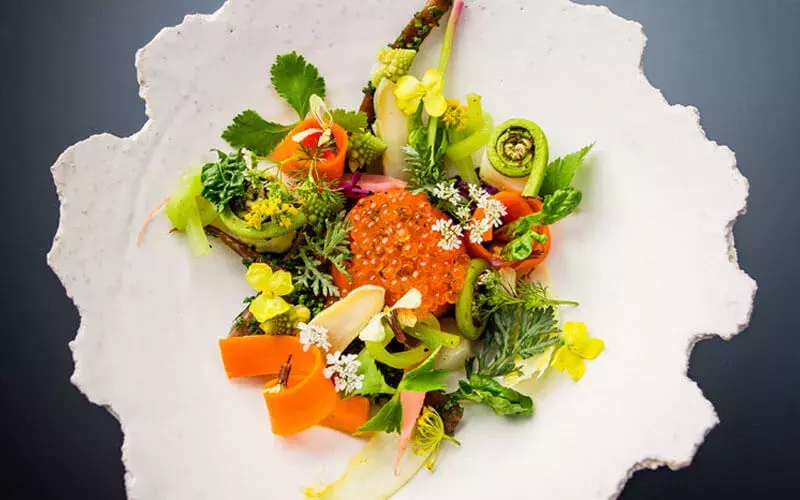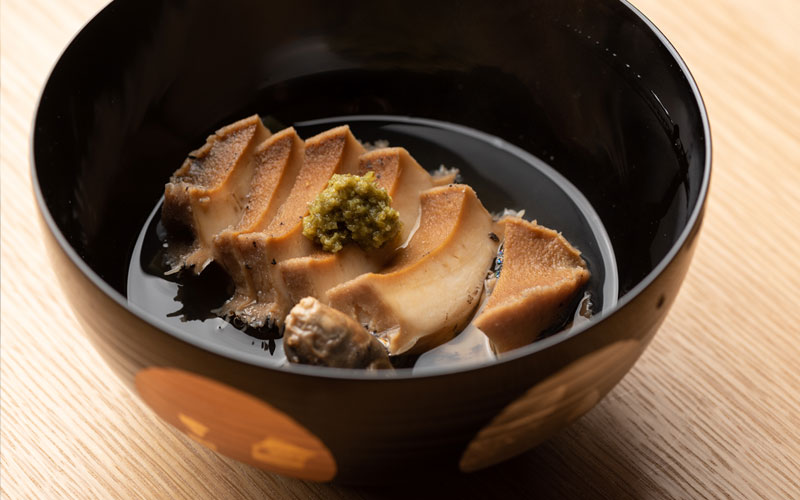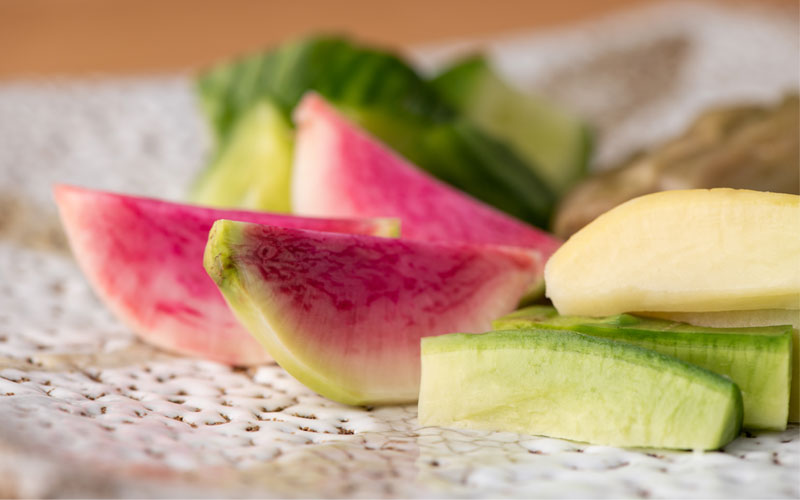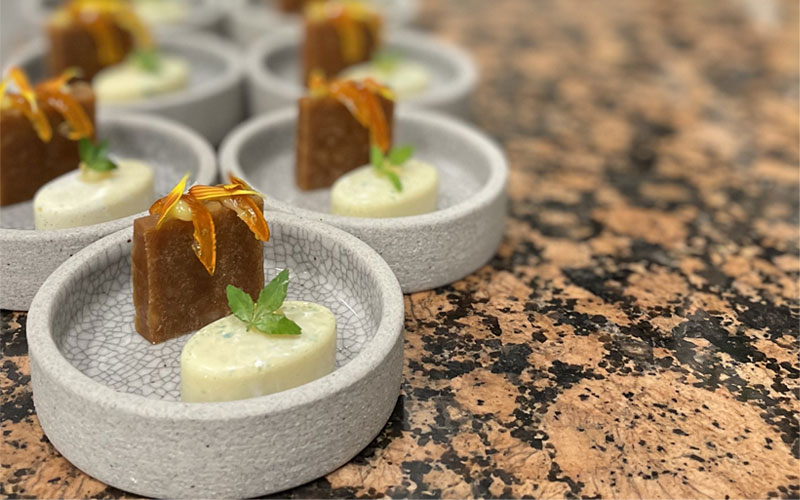
Ever since Japanese cuisine began gaining global attention in the mid-20th century, kaiseki has sparked fascination – and some misunderstanding. Often synonymous with luxury, the meal might be confused by non-Japanese speakers with omakase, a high-end multi-course meal (such as sushi) that is tailored by the restaurant’s chef to the diner’s preferences. But though kaiseki is also an exquisite (and typically expensive) multi-course meal, it is quite different. Whereas omakase is a bespoke experience that is primarily focused on the flavors of the food the chef serves, kaiseki is more like a work of art created by a master craftsman – every element thoughtfully designed for a full aesthetic and multisensory experience.
Over the centuries, kaiseki has developed from a humble meal to an elaborate art form, one that is now being taken in innovative directions by a new generation of chefs (such as Chef Hiroo Nagahara who recently hosted the Defining Modern Kaiseki event, and Chefs Yoshitaka Mitsue and Shingo Kato of UKA restaurant at JAPAN HOUSE Los Angeles). Tracing the linguistic roots of the term kaiseki reveals its modest origins – literally translating to “stones in the bosom” and referencing the practice of Zen Buddhist monks of carrying a warm stone in their robes to stave off hunger during long meditations. The term was originally used to describe the very simple meal served in courses to monks (which evolved into shojin ryori, the focus of an event at JAPAN HOUSE Los Angeles) and as part of the sequential serving of the chanoyu (tea ceremony). Gradually, kaiseki branched into two traditions – the cha-kaiseki or light meal served before the serving of tea and kaiseki-ryori, a more opulent meal served with sake. The latter evolved from existing traditions of court banquets and is the version that the general term refers to today.

While kaiseki has diversified in the hands of countless chefs and different regional styles, the ethos and structure remains the same. There are typically between seven and fourteen courses of small dishes, all based on the principle of highly local and seasonally specific ingredients. Some chefs even forage nearby for wild plants and herbs to reflect the local environment and typically use cooking techniques that enhance the subtle flavors of each vegetable or morsel of seafood or meat. Even something as simple as rice is meant to be savored in a unique way (and toward the end of the meal, for diners to not fill up too quickly and fully experience the phases). Though there are subtle differences, the overall “narrative arc” of a kaiseki meal begins soup and an appetizer, moving through sake when the soup is finished, simmered dishes, grilled dishes, rice, and dessert. One staple course is the hassun, served on a particular long, narrow wooden tray and usually representing one of the four seasons and combining “mountain and sea” components (i.e., fish and meat).
Beyond the composition of the dishes themselves and the sequence in which they are served, every aspect of the dining experience is aesthetically refined. Foods are painstakingly plated for maximum visual appeal, making canvases of the carefully chosen tableware, including fine ceramic dishes and lacquerware bowls, and trays. Dishes are chosen for their forms (such as fans, birds and flowers) and their decoration (perhaps maples in the fall and cherry blossoms in the spring). Dishes might even suggest puns or lines of classic poetry in their preparation and even in the way they are set down at the table. Even the restaurant space and location are exquisitely tweaked to enhance the experience, from the interior design, to the textiles, the seating, the artworks, and the view through a window (sometimes to a “tsubo-niwa”, a Japanese pocket garden).
The attention to detail in kaiseki made it a symbol of Japanese high culture – and also inspired the beginnings of French nouvelle cuisine in the 1960s, when increasing numbers of foreigners visited Japan. Much of this influence has been forgotten, but the very concepts of the “tasting menu” and “small plates” that have become commonplace in fine dining worldwide have their roots in kaiseki. These connections have now come full circle, as kaiseki cuisine within Japan has been undergoing a renaissance in recent years, with new global approaches inspiring culinary creations in Japan.
Many contemporary kaiseki chefs are experimenting with new techniques and ingredients while maintaining traditional principles – such as incorporating non-Japanese ingredients like truffles and foie gras or using sous vide instead of steaming. One notable example is Chef Yoshihiro Narisawa of the Michelin-starred restaurant Narisawa, who not only uses a range of unorthodox ingredients like insects and microorganisms in his meals, but also focuses heavily on sustainability and reducing food waste. Countless other chefs are exploring twists like kaiseki that is vegetarian, or fish-only, or “remixed” with other regional cuisines like French and Italian. These innovations have helped bring fresh energy to kaiseki for a new generation of diners, while still retaining the core ethos of a meal that is truly a Japanese art form.







